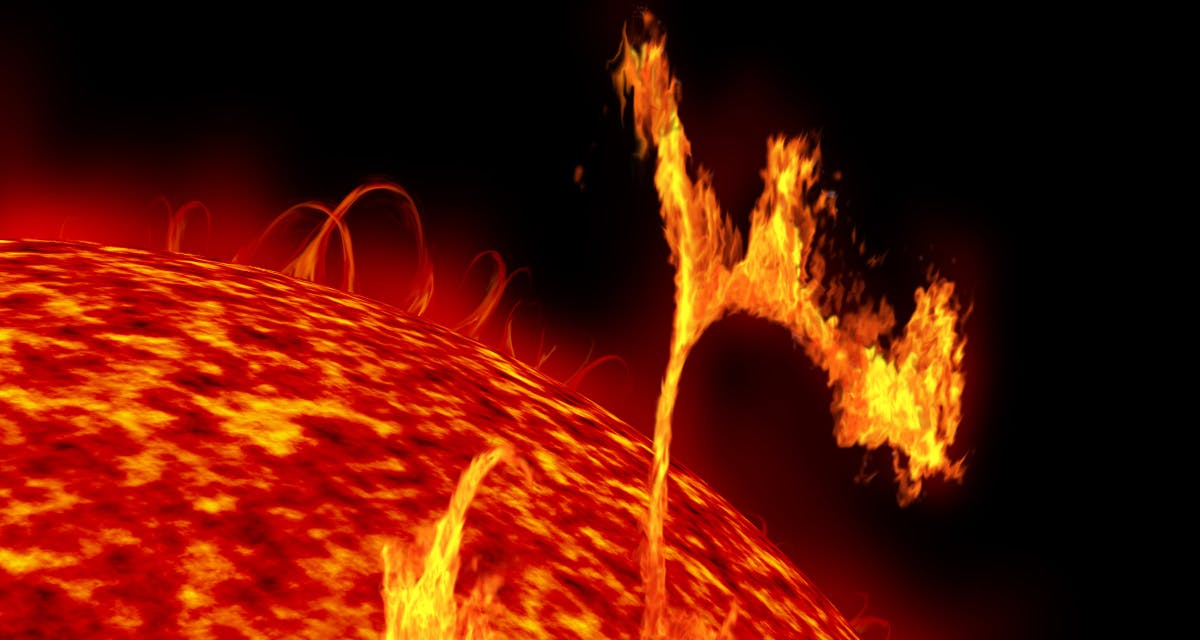The largest solar flare since 2017 partially paralyzed radio networks
Last weekend, scientists measured the strongest solar flare in four years. A radio and GPS failure was also recorded, which was classified as “severe”.
After the solar eclipse at the beginning of June, which was at least partial in this country, the closest star again provides spectacular images.
Contents
Largest solar flare in 4 years
How scientists around the world were able to measure was on July 3rd at 6:29 am Central European Summer Time a strong eruption on the sun given. The US Space Weather Prediction Center classifies the eruption in class X1.59 – there are categories A, B, C, M and X, which are supplemented with the numbers 1 to 10, which indicate the intensity of the X-rays. A is the lowest category and X the highest, even numbers above 10 are possible here. In addition, the intensity in the X range increases exponentially – X2 is twice as intense as X1, X3 twice as intense as X2 and so on.
The solar flare can be seen well on photos taken by NASA. (Photo: NASA)
Solar flares – scientists speak of coronary mass ejection – are caused by electromagnetic processes inside the sun. It consists of negative electrons and positive ions that are permanently in motion on the surface due to currents. This creates magnetic fields that can also curve outward in the form of tubes. These loops twist and can come into contact with one another – the structure of the magnetic field then changes abruptly and large amounts of energy are released: an eruption occurs.
What do solar flares mean for us on earth?
Particularly strong category X eruptions are particularly dangerous for astronauts and satellites. Otherwise, the earth’s atmosphere intercepts the radiation, so that humans and animals on earth are not endangered.

The US Space Weather Prediction Center map shows that many areas of the world were affected by the solar flare. (Screenshot: US Space Weather Prediction Center / t3n)
However, the beams can interfere with GPS signals, trigger power outages, and interfere with radio signals. The July 3 eruption triggered a radio failure classified as “severe”, during which the signal was lost for about an hour in some areas on the sun-facing side of the earth. GPS locations could be in error for about two hours.
Solar flares occur cyclically
Scientists have found that solar flares follow an average cycle of 11.1 years; however, the duration can vary between 9 and 14 years. Since the turn of the year 2019/2020, the sun has been in the 25th cycle.
Before that, the years 1957 and 1958 as well as 2003 were characterized by particularly active solar cycles. In 2003 values of up to X45 were measured; There were power outages in many cities and numerous space probes were damaged.



